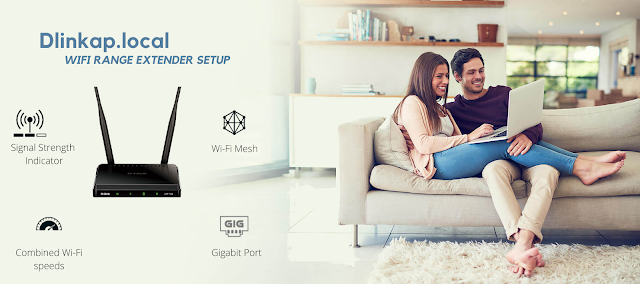Dlinkrouter.local: A Comprehensive Guide to Managing and Configuring Your D-Link Router
Dlinkrouter.local is a web-based user interface used to manage and configure D-Link routers. With Dlinkrouter.local, users can easily set up their routers and modify network settings according to their preferences.
This article aims to provide an in-depth understanding of Dlinkrouter.local, its features, and how it works.
What is Dlinkrouter.local?
Dlinkrouter.local is a local web address used to access the web-based interface of D-Link routers. This address is used to log in to the router's configuration page, where users can manage their network settings.
The D-Link router setup wizard uses this web address to configure the router for the first time. Once the router is set up, users can access the www.dlinkrouter.local web interface to modify network settings and manage the router.
Dlinkrouter.local features
The Dlinkrouter.local web interface provides users with several features to manage and configure their routers. Some of these features are:
Wireless settings: The wireless settings feature allows users to modify the router's wireless network settings. Users can change the network name (SSID), network password, encryption type, and other wireless settings.
Guest zone: The guest zone feature allows users to create a separate network for guests. This network has limited access to the Internet and other devices on the network, ensuring that the guest's devices are secure and isolated from the main network.
Parental controls: The parental controls feature allows users to restrict access to specific websites and limit Internet usage for specific devices. This feature is helpful for parents who want to ensure their children's online safety.
Network settings: The network settings feature allows users to modify the router's IP address, subnet mask, and other network settings. Users can also configure the router's DHCP server and static routing settings.
Firmware update: The firmware update feature allows users to update the router's firmware to the latest version. Firmware updates provide new features, bug fixes, and security updates for the router.
How to access Dlinkrouter.local?
To access the Dlinkrouter.local web interface, users must follow these steps:
- Connect the router to a computer using an Ethernet cable or connect to the router's wireless network.
- Open a web browser and type "dlinkrouter.local" in the address bar.
- Press Enter to access the router's login page.
- Enter the router's username and password to log in to the router's configuration page.
By default, the username is "admin," and the password is blank. However, users are advised to change the default password to a strong password to ensure the router's security.
If users are unable to access the 192.168.0.1 login web interface, they can try accessing it using the router's IP address. The router's IP address is usually written on the bottom of the router or in the router's manual.
Dlinkrouter.local troubleshooting
If users are experiencing issues with their D-Link router or are unable to access the Dlinkrouter.local web interface, they can try the following troubleshooting steps:
- Ensure that the router is connected to the computer or the wireless network.
- Check the Ethernet cables and ensure that they are plugged in correctly.
- Restart the router and the computer and try accessing the Dlinkrouter.local web interface again.
- Clear the web browser's cache and cookies and try accessing the Dlinkrouter.local web interface again.
- Reset the router to its default settings by pressing the reset button on the router for 10 seconds.
Conclusion
Dlinkrouter.local is an essential tool for managing and configuring D-Link routers. Its user-friendly interface and powerful features make it easy for users to set up their networks and ensure their network's security. By following the steps outlined in this article, users can access the Dlinkrouter.local web interface and troubleshoot any issues they may encounter.



Comments
Post a Comment